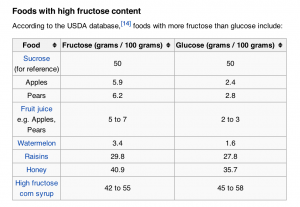Summary: Studies have shown that people who produce more superoxide dismutase (SOD) experience fewer and less intense acne breakouts. A person can produce more SOD can be by regulating the melatonin cycle and treating carb malabsorption; both are explained in great detail in this article.
The skin’s failure to produce sufficient superoxide dismutase (SOD) is a major contributor to acne, according to a theory that is rapidly gaining traction. The following studies are evidence for this theory:
- Superoxide anions (O2•−), were rapidly produced by keratinocytes upon stimulation by P. acnes, Superoxide anions mixed with P. acnes triggers skin inflammation.
- Superoxide Dismutase levels unusually low in 32 out of 34 individuals suffering from acne.
- Acne Rosacea linked to high levels of superoxide anions.
Keratinocytes* produce superoxide anions as an immune response when exposed to propionibacterium acnes.** Once superoxide anions (O2-) have completed their work, superoxide dismutase catalyzes their destruction. If this process fails, excess O2- will kill skin cells, leading to inflammation and the blockage of the sebacious glands that causes acne.
If our theory holds true, then we must find a way to produce a healthy level of superoxide dismutase.
CuZnSOD is the form of superoxide dismutase used to remove superoxide anions from human skin. Structurally, CuZNSOD consists of mostly Tryptophan, Cysteine, Copper, and Zinc. The chemical reaction that produces CuZnSOD, however, requires abundant melatonin.
An all-night melatonin surge is the best way to produce sufficient CuZnSOD. To induce an all-night melatonin surge, you must limit melatonin production during the day, which requires retinal*** exposure to unfiltered sunlight. This signals the pineal glands (****) to halt melatonin production, saving tryptophan (a melatonin precursor) for nighttime melatonin production.
In addition to melatonin, the following nutrients increase keratinocyte production of superoxide dismutase. Deficiency in them can lead to insufficient levels of superoxide dismutase:
Zinc -> proven to combat acne, and part of the CuZnSOD enzyme.
Tryptophan -> Tryptophan is essential because the body cannot manufacture its own. Tryptophan is used by the body to produce serotonin, which is later converted to melatonin.
Cysteine -> The body can produce this, and it is widely available from common foods, including red peppers, garlic, onions, and all meat.
Vitamin B Complex -> Tryptophan is converted to Vitamin B in cases of Vitamin B deficiency. Doing so depletes tryptophan levels.
Malabsorption, a digestive tract issue often called food intolerance or fructose malabsorption, is the source of many health problems. In cases of malabsorption, the digestive tract fails to completely absorb nutrients. This is likely why blood tests from acne sufferers show low levels of a variety of nutrients.
Specifically, malabsorption can cause improper absorption of tryptophan in the intestine and reduced levels of tryptophan in the blood. Symptoms of malabsorption include gas and diarrhea. Alternating the diet to minimize malabsorption can lead to a decrease in those symptoms.
Based on the superoxide dismutase theory of acne, we propose a four-fold approach to combating acne, all of which involve increasing nutrient levels.
1: Regulate the melatonin cycle.
2: Combat malabsorption. This is a complex task, but can be done by avoiding fructose (sugar) and other carbs, eating only after spending time in outdoor sunlight. Eating certain foods in dim light can induce malabsorption while eating them in bright light does not. Eat sugars in limited quantities, even in fruit. When eating fruits, eat those with low fructose levels, such as berries. The Wikipedia article on malabsorption recommends avoiding the following fruits:
3: Eat an anti-inflammatory diet rich in vegetables, organic meat, and low-fructose fruits. This will ensure that all essential nutrients are available.
4: Take vitamin supplements Zinc and Vitamin B complex. SOD as a supplement is unproven to help. Supplement melatonin as a last resort. 10 days of melatonin supplements increased ZSOD levels only 3%, but 30 day of supplementation increased ZSOD levels 23%.
Special thanks to the incomparable Databased.
* Keratinocyte is the most common cell type in the epidermis — the outer layer of the skin — constituting 95% of epidermal cells.
** Propionibacterium acnes live in the skin of all human beings, making them an unlikely root cause of acne.
*** The retina is a light-sensitive tissue lining the inner surface of the human eye.
**** The pineal gland in the brain. It produces the serotonin derivative melatonin, a hormone that affects the modulation of wake/sleep patterns.
